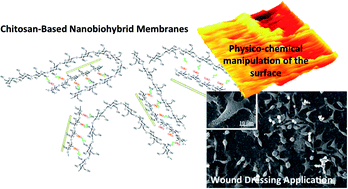Novel chitosan-based nanobiohybrid membranes for wound dressing applications
Abstract
The aim of the present work is the design and characterization of novel nanostructured biopolymer films with improved features for wound dressing applications. Nanohybrid films based on chitosan and biofunctionalized montmorillonite (MMT) with chitosan sulfate chains (SMMT), as the macromolecular intercalant, were fabricated by a solvent casting method. X-ray diffraction analysis confirmed the exfoliated microstructure of the films. The presented results reveal that incorporation of SMMT into a chitosan matrix not only improves the physico-mechanical properties of films such as tensile strength, Young's modulus and thermal stability, but also decreases their moisture vapor transmission rate. The improvement in properties was found to be more pronounced for nanohybrid systems compared with the corresponding chitosan/MMT nanocomposite films. The superior characteristics of the designed chitosan/SMMT nanohybrid films was discussed in terms of the formation of electrostatic interactions at nanointerfaces based on thermogravimetry, dynamic mechanical thermal analysis and atomic force microscopy techniques. The moisture vapor transmission rate of films was measured to be in the range of 690–860 g per m2 per day, which makes them appropriate candidates as wound dressing systems for low and moderate exudates. The fabricated films were also evaluated for their biological features including in vitro cytotoxicity and antibacterial activity. It was disclosed that films are cytocompatible, and chitosan/SMMT nanohybrid films show significant bacteriostatic activity against Gram negative Escherichia coli.


 Please wait while we load your content...
Please wait while we load your content...